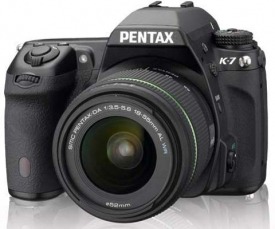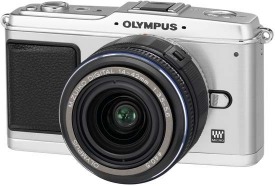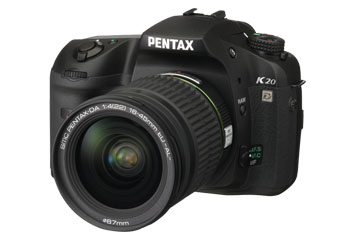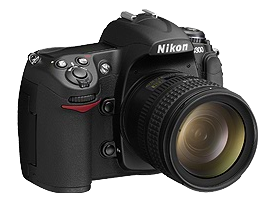TOPIC: LIVE-PREVIEW DIGITAL CAMERAS
Pandemic camera
8th September 2024Back at the end of 2019, I acquired a Canon EOS 90D, possibly the swansong for mid-range Canon SLR cameras. Much effort is going into mirrorless cameras, yet I retain affection for SLR cameras because of their optical viewfinders. That may have been part of the reason for the acquisition, when I already had an ageing Pentax K5 Mark II. Buying SLR cameras is one way to keep them in production.
Little did I know what lay ahead in 2020 at that stage. Until recently, this was not to be a camera that travelled widely, such were the restrictions. Nevertheless, battery life is superb and handling is good too. The only absence is not having a level in the viewfinder like the Pentax K3 Mark III or maybe any mirrorless camera.
The newer file type of CR3 caught me out at first until I adjusted my command line tooling to deal with that. File sizes were larger as well, which has an impact on storage. Otherwise, there was little to change in my workflow. That would take other technological changes, like the increasing amount of AI being built into Adobe software.
Outdoor photography is my mainstay, and it excelled at that. The autofocus works well on its 24 to 135 mm zoom lens, except perhaps from focussing on skyscapes at times. Metering produced acceptable results, though it differed from the Pentax output to which I had become accustomed. All in all, it slipped into a role like other cameras that I had.
Throughout 2020 and 2021, it provided the required service alongside other cameras that I had. The aforementioned Pentax remained in use, like an Olympus and another Canon. Overseas travel curtailed horizons, so it was around local counties like Cheshire, Derbyshire, Staffordshire and Shropshire. In September 2020, it travelled to Llandudno in North Wales, an exception to the general trend of English hikes and cycles.
Since then, it has been superseded, though. A Pentax K3 Mark III made it into my possession to become my main camera, returning me near enough to my pre-2020 practice. Curiosity about Canon mirrorless options added a Canon EOS RP and a 24 to 240 mm zoom lens. That has shorter battery life than is ideal, and its level is not as helpful as that on the Pentax K3 Mark III or the aforementioned Olympus. If anything, it may get replaced while the EOS 90D remains. My getting a new base in Ireland means that it has gone there to save me carrying a camera there from England. That should give it a new lease of life.
EVF or OVF?
22nd December 2019In photography, some developments are temporary fads, while others create enduring changes. Special effects filters and high dynamic range techniques generated excitement before their usage became more restrained. The same applies to most image processing techniques, as good taste eventually prevails. Some developments, however, signal more substantial shifts.
The biggest example of the latter is the move away from film photography to digital image capture. There still are film photographers who largely depend on older cameras, since very few are made any more. While my own transition came later than others, I hardly use film any more, and a lack of replacement parts for cameras that are more than fifteen years old only helps to keep things that way. Another truth is that digital photography makes me look at my images more critically, which helps me improve.
Also, mobile phone cameras have become so capable that the compact camera market has shrunk dramatically. In fact, I gave away my Canon PowerShot G11 earlier this year because there was little justification in hanging onto it. After all, it dated back to 2010 and a phone would do now what it once did, though the G11 did more for me than I might have expected. Until 2017, my only photos of Swedish locations were made with that camera. If I ever was emotional at its departure, and I doubt that I was, that is not felt now.
If you read photography magazines, you get the sense that mirrorless cameras have captured a lot of the limelight, and that especially is the case with the introduction of full frame models. Some writers even are writing off the chances of SLR's remaining in production, though available model ranges remain extensive despite the new interlopers. Whatever about the departure of film, the possible loss of SLR's with their bright optical viewfinders (OVF's) does make me a little emotional since they were the cameras that, so many like me aspired to owning during my younger years and the type has served me well over the decades.

Even so, I too have used mirrorless cameras and an Olympus PEN E-PL5 came into my possession in 2013. However, I found that using the screen on the back of a camera was not to my liking and the quality of mobile phone cameras is such that I no longer need any added portability. However, it needs to be remembered that using a Tamron 14 to 150 mm zoom lens with the body cannot have helped either. Wishing to sample a counterpart with an electronic view finder, I replaced it with an Olympus OM-D E-M10 Mark III earlier this year and have been getting on fine with that.
The camera body is compact, yet handles like an SLR. I turned off the automatic switching between viewfinder and screen because I found it distracting. I prefer to switch between them manually. Getting used to the electronic viewfinder (EVF) took some time, but adding a spirit level overlay proved both useful and educational. The camera produces images with strong greens and blues, which suits me since I like both colours. The 16.1 megapixel sensor creates smaller files that upload quickly to back-up services. My Tamron lens works flawlessly, and keeping this lens was a key reason I stayed with Olympus despite a shutter failure on my previous camera. The repair was done efficiently and at a reasonable price.
Despite the quality of the new Olympus, it has not replaced my Canon EOS 5D Mark II and Pentax K5 II SLRs. The Olympus has a much smaller frame. In January, I bought a new Sigma 24 to 105 mm zoom lens for the Canon after my older lens developed a fault that could not be fixed. The new lens performs well and produces impressively sharp images. However, the full frame Canon setup is heavy, even when used handheld. This is why the Pentax remains my choice for travelling abroad. Both the Canon and Pentax offer brighter viewfinders, which I value. Therefore, the OM-D complements rather than replaces my other cameras.
Although I can work with electronic viewfinders (EVF's) if single-lens reflex cameras (SLRs) become obsolete, I plan to use mainly SLRs for now. Canon recently launched a new enthusiast model, indicating ongoing interest in SLRs. Canon appears to envision a hybrid approach where using the screen on the back of the camera might provide faster autofocus or other functions, while the optical viewfinder (OVF) allows traditional operation. This makes me wonder if future cameras might include viewfinders that switch between EVF and OVF modes. This idea might be both far-fetched and fascinating, but other unforeseen possibilities might exist. One thing is certain: we live in a time of rapid change.
Temptations, temptations...
19th August 2009
The last time that I went out and bought a new camera was over two years ago, and I am minded not to make another purchase for a while. Apart from damage to the battery cover arising from a fall, my Pentax K10D has survived so far without a problem and I admit to being satisfied with the photos that it makes. Following a professional sensor clean, my Canon EOS 10D has been pressed into service over the past few months, too. Meanwhile, 6 and 10 megapixel sensors generate nowhere near the attention that might have been the case a few years back, but that's by the by. In fact, the megapixel race seems to have stalled, with features like video being added to photographic cameras over the last year and live screens coming to prominence as well. Neither would make me rush out to buy a new DSLR anyway, perhaps because having things the old way suits me just fine and megapixel counts never ever moved me in the first place either.
That's never to say that the likes of Pentax's K-7 or Canon's EOS 50D and 5D Mark II don't capture my attention with their promises of better quality. However, with things the way that they are in the world, I am more likely to retain my cash or maybe invest in new photo processing software for making the most of what I already have. Ideas for photography projects creep into my head when I get to looking over my online photo gallery and realise that not have my tastes changed, while my photographic eye has developed too. That seeing of things in a new light may mean that old subjects get revisited, and I don't need a new camera to do that.

High-end compact cameras such as Canon's G11 and Ricoh's GR Digital III do detain attention for a while but a brief look at their prices proves that you really got to need the portability and I never can justify the outlay when a DSLR will do all that I want from it, and perhaps even for less money. While I admit to pondering the purchase of a GR Digital to cover for the EOS 10D while it was away for cleaning, the Pentax came to be acquired when I realised that the versatility of a DSLR was too much to lose, even for a while. Olympus' E-P1 may have bridged the gap, but the old question of going miniature for the price of a full sized article recurs.
All in all, I am going to stick with what I have right now. We are coming to a time of year when things appear more golden and that combination of lighting and colour are what really matters, not how many megapixels are in your camera sensor unless you are making large prints or supplying stock libraries. As long as my cameras continue to deliver pleasing results, I'll stick with elevating my skills and taking my time over that task, even with all the announcements of new cameras at various exhibitions and shows.
Another avalanche of new DSLR’s…
24th January 2008
A flurry of new DSLR announcements came out today; they seem to come in droves when they do arrive, but I reckon that upcoming photography shows might have something to do with it. Canon replaced its entry-level offering with the 12.2 megapixel EOS 450D. Yes, I know that megapixels aren't everything, yet a goodly number does make a rather good impression and Canon's range looks a bit lop-sided again with the entry level DSLR on the surface of it having the potential for recording more detail than the next one up in their range, the EOS 40D. It almost seems that it would have been more sensible to delay the arrival of that camera until after the 450D and give enthusiasts a really impressive option.
As it stands, they might end up playing into the hands of Nikon with its D300, a strong contender if I were in the market looking for a DSLR. Pentax displays no such idiosyncrasies with its 10.2 megapixel K200D and its 14.6 megapixel K20D, while Samsung has also presented their variant of the latter: the GX200. It will be interesting to see reports of how all of these new arrivals perform. Launches like this do not take long to make your once shiny acquisitions look dated, and that fate certainly seems to have befallen my K10D. For some reason, that reminds me that my trusty old EOS 10D needs to be sent away for cleaning, a job that has been on the to-do list for a while.
A rake of new cameras
30th August 2007 The websites of Amateur Photographer and Tech.co.uk are good places to find out what is happening in the world of digital cameras, which is just as well given the recent camera launching frenzy. It all seemed to start off with Canon's EOS D40 and EOS 1Ds Mark III.
The websites of Amateur Photographer and Tech.co.uk are good places to find out what is happening in the world of digital cameras, which is just as well given the recent camera launching frenzy. It all seemed to start off with Canon's EOS D40 and EOS 1Ds Mark III.
Even if the former seemed to be a case of playing catch up, I still think that Canon should have used the opportunity to pull ahead, at least in the megapixel stakes; Sony is working on a 12 megapixel offering and could be about cause of 12 megapixel sensors becoming the norm for consumer digital SLR's like they did with the 10 megapixel level. While I realise that megapixels aren't everything, it has seemed to go like that thus far. Playing catch up doesn't apply to the 1Ds Mark III given its having a monster sensor resolution of 21 megapixels and, needless to say, the improvements to the favoured DSLR of landscape photographers don't stop there.
Nikon were also in the fray with new 12 MP offerings: D300 for the enthusiast and D3 for the professional. The sensor in the latter interestingly features a sensor that sits between full frame and the more usual APS-C sizes. Panasonic has also announced a new DSLR, while a number of manufacturers have new digital compacts on the market too. All the previous makers have something, as does Olympus. It was astonishing to see this all happening at once, yet I suppose that's how it goes. Though IFA has been on over the last week, some launches preceded this; it's usually something big like Photokina that results in this sort of thing...
Update: I have discovered since the Nikon's D3 has a sensor sized in the full frame domain. It might be 36mmx23.9mm rather than 36mmx24mm, but the FX format comes extremely close and the advent of full frame DSLR's being purveyed by a number of manufacturers may be upon us.
Another Olympus E-system review
27th June 2007
I don't buy Amateur Photographer much these days, but sight of a review of Olympus' E-410 and E-510 SLR's got a copy into my possession. Amateur Photographer review features are usually comprehensive and this was no exception; there was none of the vitriol directed towards the Live View feature by Practical Photography, a defining feature of what I consider a lop-sided and none too useful review. The verdict was positive in the main, with the E-510 getting the nod over the E-410 because it fared better on the usability side of things. Image quality, my major concern, was said to be impressive with only dynamic range counting against the results. The Live View feature didn't attract the harsh commentary devoted to it by Practical Photography. Following this review, I have to say that the E-510 does tempt me with its combination of good image quality, dust removal and image stabilisation.